With over 400 species of birds, from common ones like the northern cardinal to uncommon birds like Cassin’s kingbird, Tennessee can provide you with an exciting birding experience.
You can go to picturesque locations like Radnor Lake State Park’s hardwood woodland, home to more than two dozen songbird species. Instead of searching for Tennessee birds along woodland boundaries, you can draw them to your garden with bird seed and a bird bath.
Get ready to pack your birding equipment as we go over the must-see birds in this beautiful state!
Wood Duck
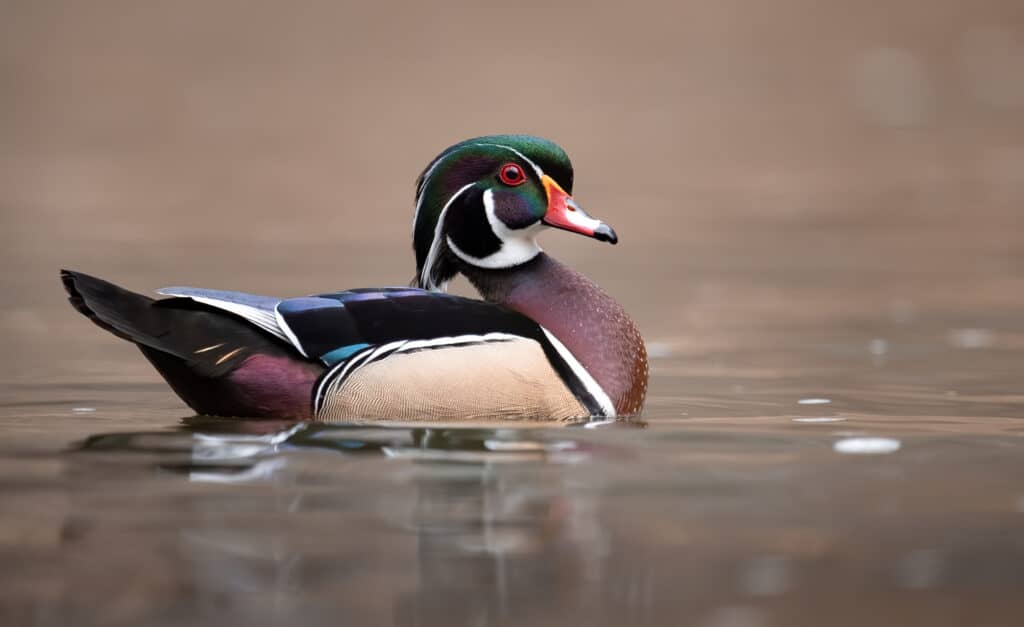
The Wood Duck prefers to nest in cavities, although it will use nest boxes in places where there aren’t many.
©Harry Collins Photography/Shutterstock.com
The most frequent nesting bird in Tennessee is the wood duck, which many people believe to be the most attractive of all the waterfowl in North America. It inhabits freshwater marshes, riparian areas, and wooded wetlands.
The Wood Duck prefers to nest in cavities, although it will use nest boxes in places where there aren’t many. In the breeding season, Wood Ducks are rare to locally frequent throughout the state, with lower numbers present throughout the winter. The male wood duck has an iridescent-green and white head with a tall crest, red eyes and bill, black on top, a deep red belly, and light golden flanks.
The female has a thick crest on her head and is generally gray-brown with a white patch around one eye. In “eclipse plumage,” which lasts from June to September, the male takes on the appearance of the female but keeps the female’s crown patterning and predominantly red bill.
Tennessee Warbler
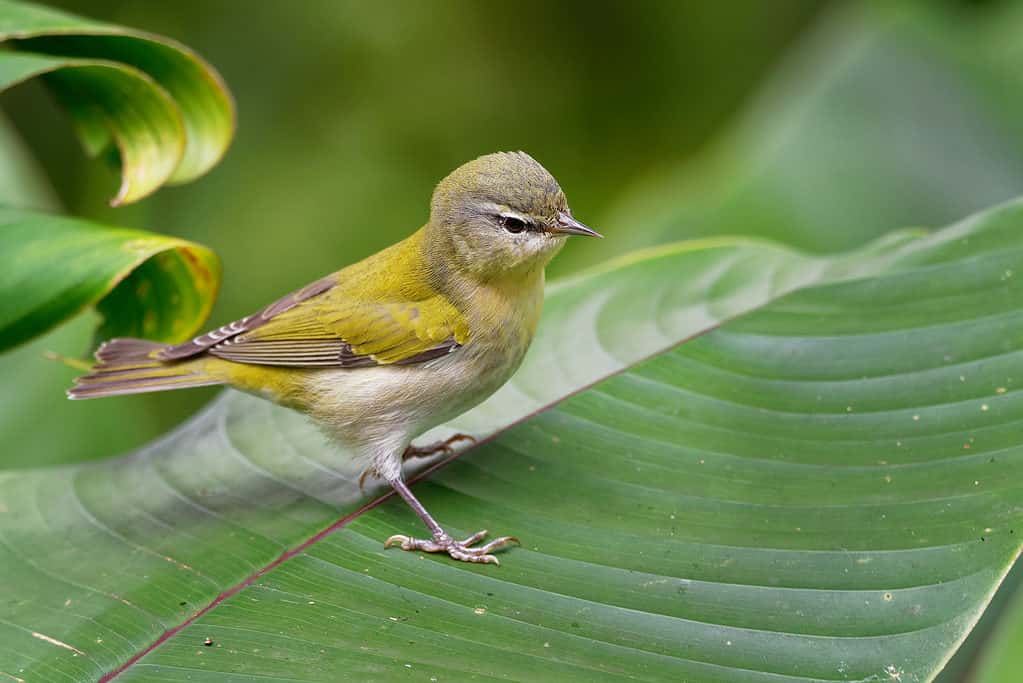
Tennessee warblers can be found in most forests and woodlands while migrating to second-growth tropical woods in winter.
©Martin Pelanek/Shutterstock.com
Tennessee Warblers mainly eat bugs when foraging on thin branches up in the tree tops. The tiny caterpillar known as spruce budworm serves as their main source of food in their nesting habitats.
The bird’s migration in 1811 led Alexander Wilson to gather a specimen on the shores of the Cumberland River, which gave rise to the name. Breeding males have an emerald back and no wing bars, juxtaposing their gray head and white line across their eyes. The under tail coverts and all of the underparts are white.
Less difference exists between the head and back in females and non-breeding males, who are predominantly green in color. Everywhere but the white under tail coverts can be quite olive-yellow at times. They can be found in the majority of forests and woodlands while migrating second-growth tropical woods throughout the winter.
American Robin
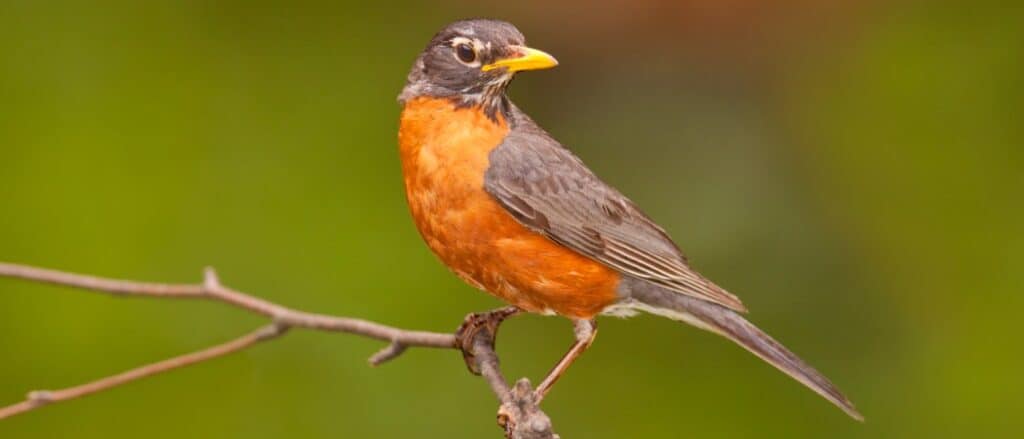
These robins migrate to the lower 48 states in the winter, where they frequently roost in sizable flocks that can reach the hundreds of thousands.
©iStock.com/Silfox
The American Robin is a recognizable local bird that can be seen in the summer snagging earthworms on residential lawns all around the United States. Interestingly, it also happens to be one of the most prevalent bird species at the northernmost point of the arctic boreal forest!
These robins migrate to the lower 48 states in the winter, where they frequently roost in sizable flocks that can reach the hundreds of thousands. During the time when Tennessee’s resident birds are not breeding, more northern nesters join them.
Despite the fact that the two species aren’t closely related, homesick European settlers named the robin after their beloved and well-known Robin Redbreast. Nevertheless, the American Robin and the all-black European Blackbird are directly connected and have a similar body form and song.
Barn Swallow
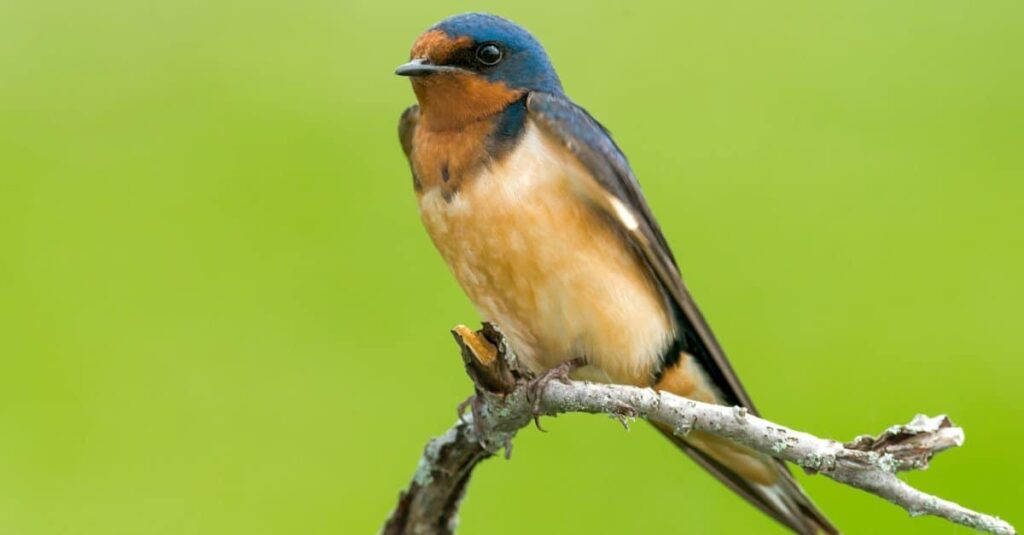
The Barn Swallow inadvertently started the American conservation effort, not the more well-known egret!
©Paul Reeves Photography/Shutterstock.com
The Barn Swallow is the swallow that Tennessee residents are most familiar with since it likes to nest in barns. The Barn Swallow used to nest mostly in caverns, but now it nearly exclusively picks man-made buildings.
It breeds all over the northern hemisphere and winters in the majority of the southern hemisphere, with the notable exception of Australia and Antarctica, making it the most widespread and numerous swallow species on the entire planet. In Tennessee, the Barn Swallow can be found from late March until early October.
The American conservation effort was inadvertently started by the Barn Swallow, not the more well-known egret! George Grinnell’s 1886 editorial in Forest and Stream, which finally resulted in the creation of the first Audubon Society, seems to have been inspired by the slaughter of Barn Swallows for the fashion statements for women.
Downy Woodpecker
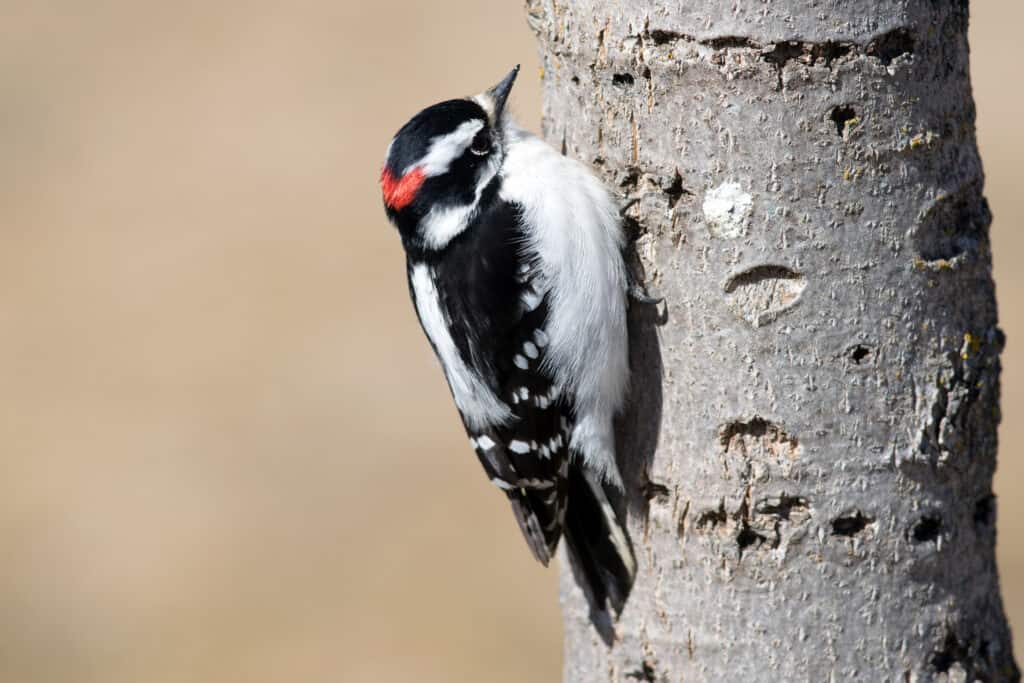
The underside of this little black-and-white woodpecker is white, and its black wings have white spots on them.
©Northernguy/Shutterstock.com
The Downy Woodpecker is one of North America’s smaller and most common woodpeckers. It can be spotted all year long in woods from Alaska to southern Florida and from coast to coast. It can be found easily drawn to domestic bird feeders and is equally happy in urban forest areas and rural woodlands.
Sexes use different foraging strategies; males prefer smaller tree limbs in the high canopy, while females prefer bigger branches and tree trunks. Males seem to prevent females from feeding in the most fruitful areas. The ladies in a woodlot changed to feeding on the smaller branches after the males were temporarily removed.
The underside of this little black-and-white woodpecker is white, and its black wings have white spots on them. The outer tail feathers are barred white or have black spots on the tail, which is black overall.
The small, black bill is paired with white and black stripes on the face. The difference between the sexes can be seen in the red area on the back of the male’s skull, which the female lacks.
European Starling
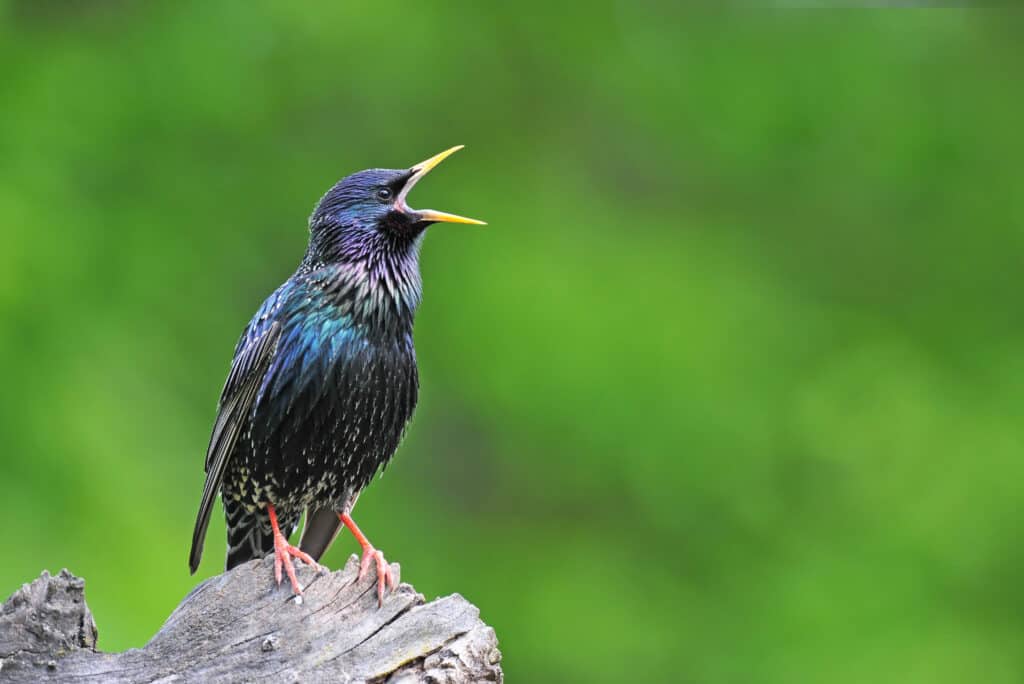
European starlings are excellent mimics and can imitate other birds, machinery, and even human speech.
©Soru Epotok/Shutterstock.com
In December 1921, starlings were discovered in Bluff City, Sullivan County, and Nashville for the first time. In 1925, reports of the first nests came out of Bristol and Knoxville. Starlings began building nests in Memphis around 1935. The Tennessee Breeding Bird Survey pathways currently show them as the second most numerous bird species.
Currently, there are more than 200 million European Starlings living in North America. They are all descended from the 100 birds that were launched in Central Park, New York, in the early 1890s by an organization whose goal was to bring all the birds described in Shakespeare’s works to America.
The European Starling’s jaw muscles move “backward.” The muscles fling the bill open rather than clamping it shut with most of their force. This enables the bird to bury its shut bill into the surface of the earth or into an item before opening it. The capacity for the eyes to travel forward gives them binocular-like eyesight.
Great Blue Heron

With a massive six-foot wingspan, the Great Blue Heron normally holds its head close to its body while flying.
©Brian Lasenby/Shutterstock.com
The most famous and biggest heron in Tennessee is the Great Blue Heron. It is a year-round dweller and is frequently called a “crane” inadvertently. Long legs, an “S”-shaped throat, and a large yellowish bill are features of this huge, predominantly gray heron.
Except for a black line that crosses over the eye and forms a plume on the back of the neck, the head is white. The thighs are crimson colored, with brownish or green legs. With a massive six-foot wingspan, the Great Blue Heron normally holds its head close to its body while flying.
Fish growers have been extremely concerned as of late because Great Blue Herons have discovered that fish hatcheries are simple places to harvest fish. Yet, recent research discovered that the majority of the fish the herons consumed were sick fish that would have perished quickly anyhow. Herons can more easily catch ill fish because they spend a lot of time close to the surface of the water.
Carolina Chickadee
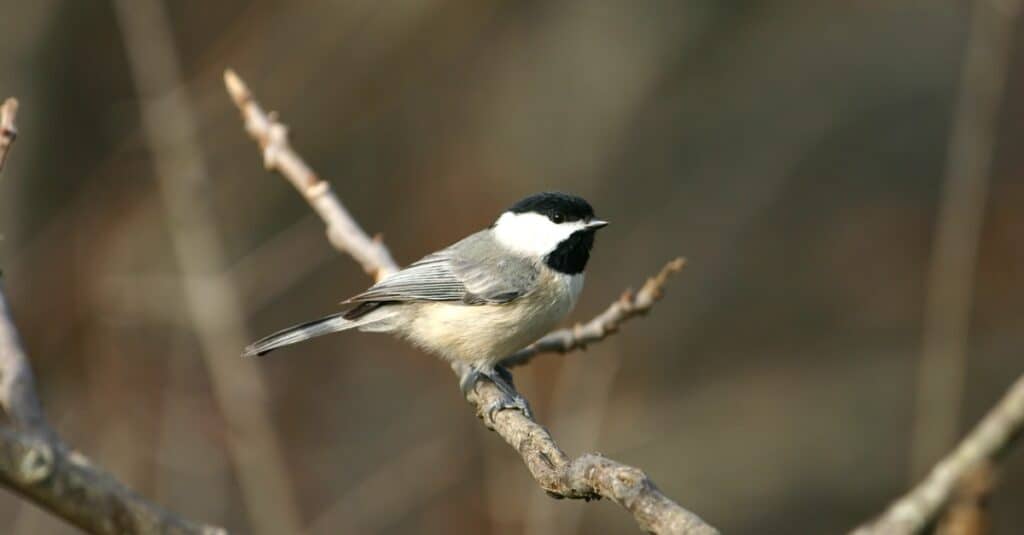
The Carolina chickadee averages around five inches in length.
©iStock.com/lgunderson
Most Tennesseans are familiar with the Carolina Chickadee, a vivacious tiny black, white, and gray bird that regularly visits bird feeders and sings its name while hunting. Only the high heights of the Appalachian Mountains, where Black-capped Chickadees are frequently prevalent, are absent of Carolina Chickadees throughout the entire year in Tennessee.
The breeding range reaches the Gulf Coast and northern Florida from New Jersey to the west, through southeastern Kansas and central Texas. Carolina Chickadees spend the winter in flocks with two to eight other chickadee species. Chickadees protect their territory from other flocks. In these groups, dominant birds create breeding grounds that were a component of the flock’s wintering grounds.
Lastly, chickadees are excellent memory creatures. They can hide tens of thousands of food items in various places and remember almost all of them when they return.
House Finch
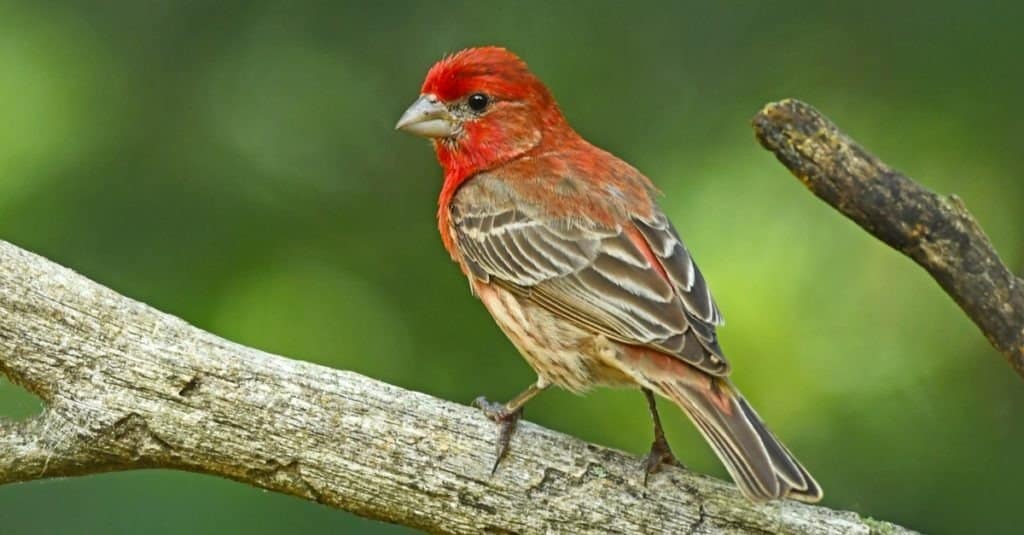
A male House Finch acquires the carotenoids that give him his orange-red color from the food he eats when molting.
©Brian A Wolf/Shutterstock.com
In both Sullivan and Knox Counties in 1980, the House Finches’ first recorded nesting in Tennessee took place. They had reached Shelby County across the entire state by 1986. These birds are currently widespread in many residential sections of the state.
The male has an orange-red forehead, neck, breast, and rear; a brown back, wings, and tail that is occasionally mildly red-washed; and a whitish belly with side-to-side streaking. The female has hazy patterns on her chest and sides and is generally a brownish-gray color. Both the male and female have a very tiny groove on the tail.
A male House Finch acquires the carotenoids that give him his orange-red color from the food he eats when molting. Different amounts of red are present. The male is redder the more carotenoids there are in the meal.
According to studies, females seek to breed with the reddest male they can locate in order to increase the likelihood that they will find a strong male who will be able to gather sufficient food to provide for the nestlings.
Indigo Bunting
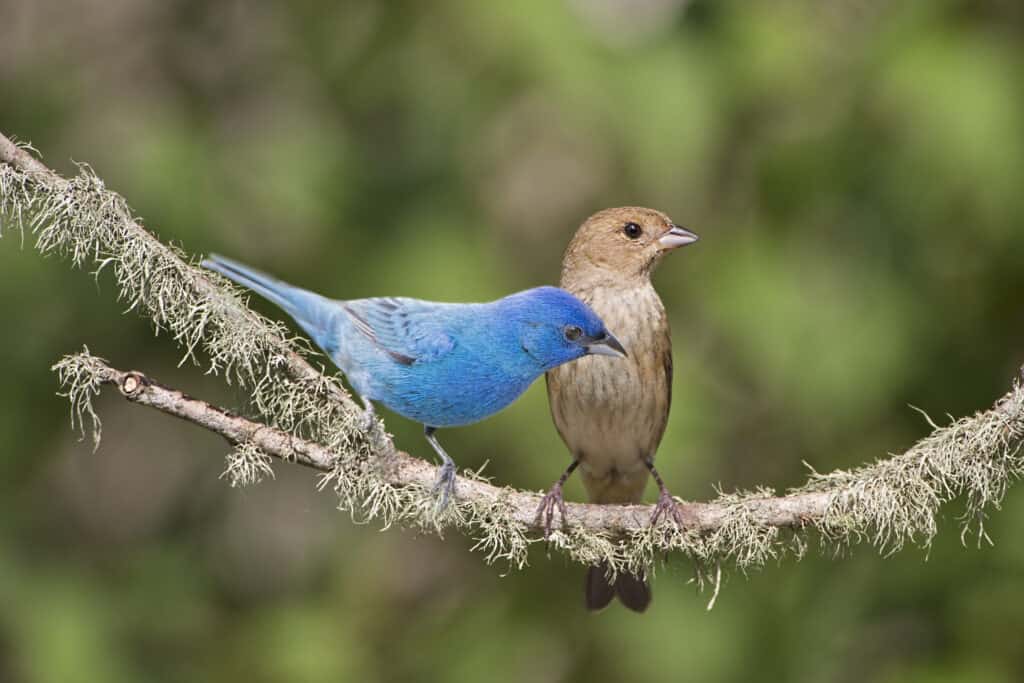
The male Indigo Bunting is totally blue, which is striking when seen in excellent light.
©Bonnie Taylor Barry/Shutterstock.com
In Tennessee, the Indigo Bunting is most likely the strikingly all-blue bird you observe on the side of the roadway during the summertime. The male Indigo Bunting is totally blue, which is striking when seen in excellent light, unlike the Eastern Bluebird which has a rusty and white belly.
This bird can be found in shrubs or small regions and overgrown meadows at all elevations and is one of the most numerous and widely dispersed breeding birds in the state. Long into the summer, the male performs continuously, and his double-phrased tune is pretty recognizable.
Statewide, between mid-April and mid-October, the Indigo Bunting can be seen in a range of densely vegetated areas, such as wooded fields, fencerows, vegetation, and open areas in both coniferous and deciduous woodlands.
Wild Turkey

Turkeys can see better than humans.
©iStock.com/Robert Winkler
The biggest bird that builds its nest in Tennessee is the wild turkey. This large-bodied, big-footed species spend the night in trees and only flies short distances. The historical range of the wild turkey covered all of North America, from central Mexico to southern Canada. Tennessee is home to the eastern subspecies.
Native Americans and colonists valued it highly as a source of food. Still, by the turn of the 20th century, overhunting had driven the species out of the majority of its habitat, including much of Tennessee. This bird has been reintroduced across its former range and in 49 of the 50 United States thanks to contemporary wildlife management.
An interesting fact: Male Wild Turkeys don’t offer any parental guidance. The eggs are only incubated by the female. Upon hatching, the offspring quickly follow her and swiftly pick up the ability to gather their own food. Flocks of 30 or more birds may be formed by a number of females and their broods.
Up Next
- Tennessee’s 5 best Bird-Watching Spots This Summer
- Animals in Tennessee
- Discover the Fastest Animals in Tennessee
- How a Massive Earthquake Split Tennessee’s Largest Lake from the Mississippi River
The photo featured at the top of this post is © Soru Epotok/Shutterstock.com
Thank you for reading! Have some feedback for us? Contact the AZ Animals editorial team.






